M-O-O-N, that spells “development hell.”
Stephen King’s 1978 epic The Stand tells the story of a super-flu wiping out 99.4% of the world’s population in a mere ten days. Bummer. That’s just the first quarter of the story, though. The rest involves a battle for humanity’s soul as the survivors are drawn by prophetic dreams to either rally around a force of good (a gospel-loving old black lady in Nebraska) or embodiment of pure evil (basically, the devil in a kickass pair of jeans in Las Vegas). It kind of plays out like a less-overtly Christian Left Behind, although [spoiler alert] the climax involves the literal hand of God laying the smack down on Vegas! So, there’s that.
ABC’s 1994 miniseries starring Gary Sinise and Molly Ringwald was my first exposure to the story, and it blew my mind. Humanity could be wiped out by a disease? Why hadn’t anyone warned me before?!? To this day, every time I hear about the next would-be pandemic (bird flu, H1N1, etc.) I briefly flash back to The Stand.
Warner Bros. has been trying to make a new Stand movie since 2011, and over the weekend The Wrap revealed discussions are currently underway to adapt The Stand into an eight-part miniseries on Showtime as a precursor to a single big budget movie released in theaters. It’s a reminder that every time anyone’s tried to make The Stand into a movie they’ve eventually realized, “Wow, this really needs to be a mini-series.” After all, the novel is nearly 800 pages long in its short version, over 1000 pages in its unabridged form. Stephen King and legendary director George Romero tried for an entire decade to get a movie made before we finally got the ’94 mini-series, and in recent years Warner Bros. has cycled through multiple directors while trying to make a new version.
Here’s the timeline of how it’s all gone down, from the writing of the novel up to this Showtime mini-series/theatrical film hybrid:
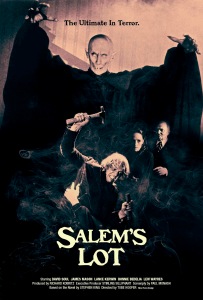 1974-1978: King spent four years writing the novel, drawing his inspiration from, among other things, a real-life chemical spill in Utah that killed a number of sheep but could have easily claimed all of Salt Lake City. Plus, he always wanted to create an Americanized version of a Lord of the Rings fantasy epic. Remember, this was before he started his Dark Tower series.
1974-1978: King spent four years writing the novel, drawing his inspiration from, among other things, a real-life chemical spill in Utah that killed a number of sheep but could have easily claimed all of Salt Lake City. Plus, he always wanted to create an Americanized version of a Lord of the Rings fantasy epic. Remember, this was before he started his Dark Tower series.
1977-1978: A movie version of The Stand was originally conceived when Warner Bros. introduced King to horror icon George Romero (Night of the Living Dead) and his producing partner, Richard P. Rubinstein (Dawn of the Dead), to discuss a possible Salem’s Lot movie.
1979: King, Romero, and Rubinstein came up with the idea for what eventually became the horror anthology film Creepshow, and entered into a long-lasting partnership. According to Romero, “Steven gave us the first choice of any book or story of his that wasn’t sold. We had the opportunity to buy the rights of The Dead Zone, which we read in manuscript from, but when it came to a choice we chose The Stand.”
1980: King, Romero, and Rubinstein announced their plans to make The Stand, Creepshow, and a 70mm 3-D collaboration due out by the middle of the decade – King writing all three, Romero directing, Rubinstein producing. King explained that Creepshow was being made first as a way to convince investors to fund The Stand:
“Our idea here is simply to do something original that we can do on a low budget, get it out there and hopefully make a profit. It will show people that we’re for real. Then we can go ahead and make a deal with one of the majors for the production money for The Stand. The money to do The Stand would be there right now, actually; the question is one of how much control over the project we can get, so that George, in particular, can do the kind of film he wants to do. We want to give it every chance; if no one likes the picture, at least it won’t be a result of studio interference. On the other side of that, if we make a good picture and people like it, I’d hate to see some vice-president in charge of ass-scratching at one of the majors come out at the end saying how this wonderful idea was all his simply because he controlled the money.”
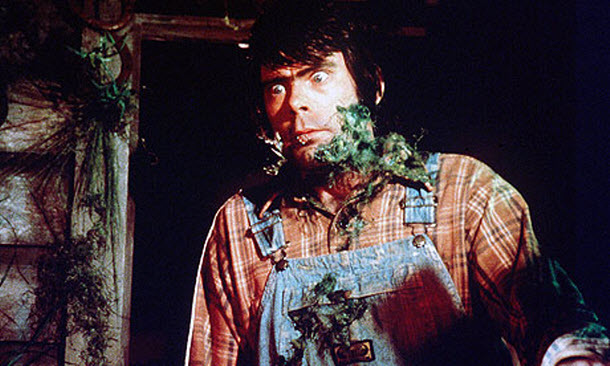
1981: While making Creepshow, Rubinstein offered Fangoria a status update on The Stand, estimating their target budget to be at least $15 million, “The Stand will require a major budget, which means a considerable amount of time spent arranging financing, and a tremendous amount of work to film.” Well, duh.
1982: With a production budget of $8m and initial running time north of three hours, Creepshow was edited down to two hours and granted a wide Halloween weekend release, where it grossed around $10 million. However, it barely managed to double that across the rest of its theatrical run, ending with just $21m. King later claimed, “Warners had a chance to push Creepshow through the roof, and they chose to put it in their pockets and get out.” Still, this was good enough to keep the chances of a Stand movie alive.
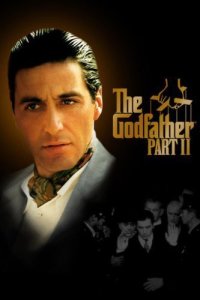
1983: The strain finally crept in, with King revealing to Cinefantastique the first draft of his Stand screenplay was 400 pages long, the second draft 300 pages, and cutting it down even more was turning into a nightmare:
Length is a problem. Again, it’s a problem because like the last time George and I talked about it, I said, ‘Okay, this is what we’ve got. It’s been through two drafts now and now it’s down to a length of what would probably be in shooting time about four hours.’ In other words, 40 minutes longer than Godfather II. So I say, ‘Okay, we’re at this point where we gotta lighten this boat, George. We gotta throw some people overboard. Who’s expendable?’ And he says, ‘Well, let me think about it.’ So he thought about it and I thought about it and I came back to him. And there’s this little kid in the book who … pals around with one of the characters … I said, ‘Well, Joe can go.’ And George kind of says, ‘Well, I like him.’ We tried to get rid of a couple of people and they didn’t want to stay down.
1985: And they finally had their, “What if we do it on TV?” moment, with King lamenting, “But the networks don’t want to see the end of the world, particularly in prime time. Advertisers don’t want to sponsor the end of the world. Cable didn’t have enough money.” So, King wanted to mimic what the Salkinds had done with Superman 1 & 2, “For a long time I pushed for doing it in two sections — Stand I and Stand II. I thought it would be possible to build a big artificial climax in the middle that would satisfy audiences for the time being. If it was all shot at once, the films could be released maybe three months or a season apart.”
However, they couldn’t get enough money for that. So, King persisted in hacking away at his script to turn it into a single manageable film, “I have to cut my 300 pages of screenplay in half. I think I know how to do it now, but I don’t relish the idea because I know that some of the characters will get squeezed.” Still, he seemed adorably optimistic, “The film is going to happen.”

1984-1988: The Stephen King movies Firestarter (’84), Cat’s Eye (’84), Silver Bullet (’85), Maximum Overdrive (’86), and The Running Man (’87) all turned into box office duds, seriously screwing over any efforts to secure funding for The Stand. As Romero later told Cinefantastique, “Had a couple of the movies based on Steve’s books gone through the roof, I think we could have financed it in a minute. It’s no fault of the material, even though I didn’t think all the films were very good. It’s just circumstance.” The only successful King film from this era was Stand By Me (’86).
Meanwhile, Romero left the production company he co-founded with Rubinstein in the mid-70s, Laurel Entertainment. As a result, his connection to The Stand became very tenuous. At some point along the way, John Boorman (Zardoz, Exorcist II, Excalibur, The Emerald Forest) was attached as the new director.
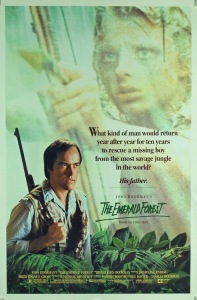
Early 1990s: After writing five total drafts of the script, King finally gave up, quipping at the time, “I’m glad I’m out of it.” Warner Bros. paid Rospo Pallenberg (The Emerald Forest) to come up with a new feature film treatment. He was an out-and-out fan of the book, walking into his first meeting on the project carrying an original paperback edition. He described the story as being “a spiritual quest telling of the strangeness about the world in which we enter,” and his first draft cut the fat while also managing to fit in most of the book’s best sequences as well as a couple scenes of his own creation [You can read his script here].
Rubinstein later praised Pallenberg’s adaptation, “I think Rospo was successful where Steve wasn’t in terms of being able to get some distance on the material and make those decisions that needed to be made, in terms of what stays in the movie and what gets left out … Basically what I’m looking to do, and I think Rospo has been successful in doing, is not being literal in the translation but reproducing the feel.” For his part, King merely said, “I don’t envy the work he had to do.”
Things looked they were finally coming together. Robert Duvall was even attached to play Randall Flagg. And then Warner Bros. surprisingly passed on the project.
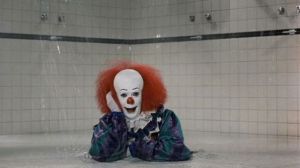 Early 1990s: Inspired by the ratings success for the 1990 King miniseries It, ABC offered to make The Stand as a four-part miniseries, sending King into a four-month writing spree, ignoring Pallenberg’s script and creating an entirely new one, sanitized for television. Within days of receiving King’s new script, ABC officially greenlit the miniseries, eventually splitting the $28 million budget with Laurel Entertainment, which had become a subsidiary of Aaron Spelling’s company by that point. George Romero was not offered the chance to direct. Instead, King kicked the gig to Mick Garris, who told Fangoria, “The only reason I am here is because of Stephen King. I don’t think he’s used to a director really wanting his input as much as I did on Sleepwalkers (1992)-encouraging it, wanting it to be faithful to the tone he set and really looking for his approval. If you have that offered to you, you’d be a fool not to take advantage of it.”
Early 1990s: Inspired by the ratings success for the 1990 King miniseries It, ABC offered to make The Stand as a four-part miniseries, sending King into a four-month writing spree, ignoring Pallenberg’s script and creating an entirely new one, sanitized for television. Within days of receiving King’s new script, ABC officially greenlit the miniseries, eventually splitting the $28 million budget with Laurel Entertainment, which had become a subsidiary of Aaron Spelling’s company by that point. George Romero was not offered the chance to direct. Instead, King kicked the gig to Mick Garris, who told Fangoria, “The only reason I am here is because of Stephen King. I don’t think he’s used to a director really wanting his input as much as I did on Sleepwalkers (1992)-encouraging it, wanting it to be faithful to the tone he set and really looking for his approval. If you have that offered to you, you’d be a fool not to take advantage of it.”
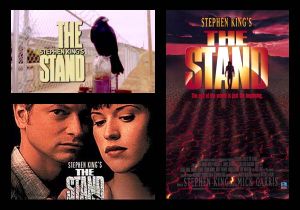 1993: Kicking off in Utah in February, the entire shoot lasted 104 days, filming in and around Salt Lake City, New York City and Las Vegas. There were 125 speaking roles and more than 600 extras during the Las Vegas sequence alone, and Kathy Bates and Ed Harris both appeared in uncredited roles. Kareem Abdul-Jabbar even popped up in a couple of scenes…for some reason.
1993: Kicking off in Utah in February, the entire shoot lasted 104 days, filming in and around Salt Lake City, New York City and Las Vegas. There were 125 speaking roles and more than 600 extras during the Las Vegas sequence alone, and Kathy Bates and Ed Harris both appeared in uncredited roles. Kareem Abdul-Jabbar even popped up in a couple of scenes…for some reason.
1994: The eight-hour mini-series was telecast in four parts in May, turning into a ratings winner for ABC and at least moderately pleasing King, “When I look at it and I hear them say my words, at least I don’t want to throw up. I look at it and on the whole I’m pretty proud of it.”
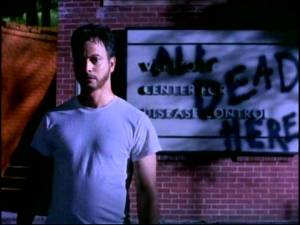
2008-2012: Overseen by King himself, Marvel published a grittier, comic book adaptation of The Stand in 31-issues divided into six primary story arcs. And the world collectively applauded, “Now, that’s the version of Randall Flagg I had imagined!”
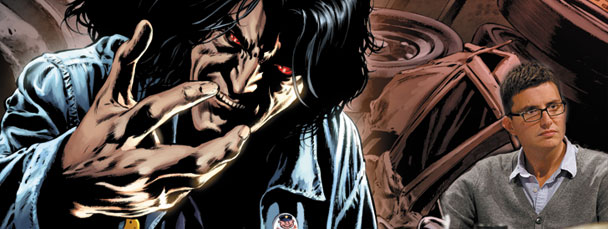
2011: The Hollywood Reporter announced at the start of the year that Warner Bros. and CBS Films were developing a new, feature-length adaptation of The Stand, and by July the project had ballooned into a planned trilogy to be directed and written by Harry Potter vets David Yates and Steve Kloves. After just two months on the job, Yates and Kloves walked, with the former explaining the material was best suited for a miniseries, “I could see making a miniseries from it, a really interesting, intricate, layered, enjoyable long-burn of a miniseries, I could see that, but what was missing for me were the big movie moments in the material, the big set pieces.” Ben Affleck, then fresh off of The Town, was named as their replacement.
2013: And then Ben Affleck was cast as Batman and suddenly The Stand dropped off of his priority list. Crazy Heart director Scott Cooper was named as his replacement, but a couple of months later he backed out due to “creative differences,” shortly thereafter releasing Out of the Furnace starring Christian Bale, which bombed pretty hard.

2014: Early in the year, Josh Boone was somewhat quietly hired to take over as the new writer-director, which seemed like an especially shrewd move when his major studio directorial debut, The Fault in Our Stars, turned into a massive hit that summer. The rest of the year was plagued with casting rumors before Boone clarified on Twitter he wanted Christian Bale as Randall Flagg and Matthew McConaughey as Stu Redman. He claimed in September the script was done and ready to move forward as a single three-hour film, but by November he was telling people they were going to split it into four full-length feature films.
2015: Boone has been hired to create a new adaptation of Anne Rice’s vampire novels and an X-Men spin-off project, yet the word is that if the deal for The Stand at Showtime goes through he will direct every episode of the mini-series as well as the eventual film.
And that brings us up to the present. While The Stand once felt unique, it now tells a very familiar story in a pop culture landscape littered with disease outbreak movies (Outbreak, Contagion) and TV shows (BBC’s Survivors, Netflix’s Between, The CW’s upcoming Containment) and an embarrassingly large supply of post-apocalyptic stories (The Walking Dead, which ups the ante with zombies). Plus, Lost apparently took a fair bit from The Stand. So, you could argue The Stand‘s pop culture moment has come and gone, but since when has that stopped Hollywood from trying to revive something?
The ’94 mini-series is currently available to stream on Netflix, and, yes, Molly Ringwald’s acting is still problematic. There are those who have been dying to see a version of The Stand not sanitized for early 90s TV, a need that was only partially met by Marvel’s comic book update. Either way, the best way to adapt this story has always been in a longer form than a single movie. So, if they’re going to make a new one, what they’re proposing to do with Showtime is the way to go.
Would you watch a new Stand mini-series? Let me know in the comments.
Source: Everything pre-2011: Creepshows: The Illustrated Stephen King Movie Guide, The Rise and Fall of The Stand; From 2011 to the present: Sourced from Wikipedia

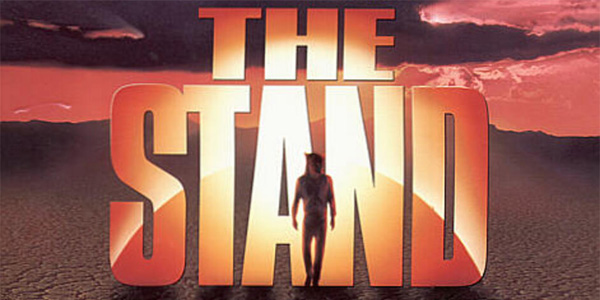
There are some King books that can only be made into a series. Nothing less will do it justice. The Stand, The Dark Tower and It are all books that can only be done in series form to get them right.
You cannot squash something like The Stand down to a three hour movie and get it right. You just can’t . You need, like LOTR, at least twelve hours.
As for The Dark Tower, I don’t ever expect to see that onscreen in my lifetime.
To be honest, when I sat down to write this timeline I had it in my head that I’d end up talking about the period when Ron Howard was going to adapt The Stand into a series of movies. I quickly remembered, “Oh, yeah, that was The Dark Tower, not The Stand.” Really, you could probably put together a timeline like this one for both “It” and The Dark Tower, with “It” being the most similar since it at least got a 90s mini-series. The story’s always the same – someone comes along assured that they can crack the code and get this thing down to something manageable, and they walk away realizing, “Yeah, that needs to be a mini-series or at least several movies.”
The last I heard on The Dark Tower is that Tom Rothman snatched up the rights as one of his first big moves as the new head of Sony Pictures, and he recently told Variety, “It’s sprawling and challenging,” but they’ve come up with a “creative solution” that “unlocks the power” of the material.” (https://weminoredinfilm.com/2015/06/04/tom-rothmans-strategy-to-save-sony-pictures-whats-going-to-galvanize-audiences-who-arent-interested-in-comic-books/). Yeah, good luck with that.